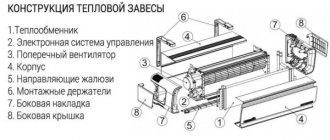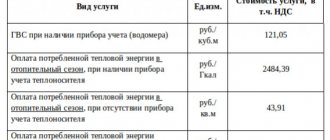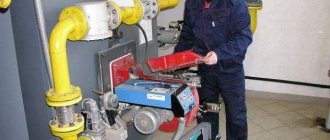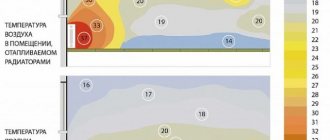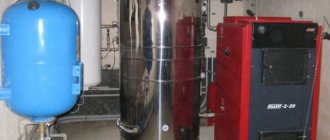company's news
15.08
2019
In early August, Deputy Prime Minister Vitaly Mutko approved a roadmap for the transition to a reference method for setting tariffs for water supply, wastewater disposal and heat supply.
This was reported by the Federal Antimonopoly Service (FAS). Russian President Vladimir Putin ordered changes in tariff regulation last summer. The draft of the new tariff law was prepared by the FAS and the Ministry of Economic Development. The roadmap activities are scheduled until the end of summer 2021. The full transition is scheduled to be completed in 2023.
The roadmap itself includes 9 large-scale measures to improve tariff regulation in the housing and communal services sector and consists of three blocks. The first block includes a methodology for applying standards in housing and communal services through the development and adoption of a regulatory legal act. It will contain the parameters of regulated organizations, the principles and procedure for setting tariffs using the method of comparing analogues (reference method), as well as the schedule for the entry into force of this document in the regions.
The second block concerns the calculation of tariffs and the use of the reference method when setting them for companies. The third involves the development of informatization of tariff regulation of housing and communal services. According to the authorities, this will make the utility system open to consumers and increase the transparency and efficiency of regulatory decisions. It is expected that in the future tariff regulation will be monitored by artificial intelligence, elements of which are planned to be introduced into this area.
One of the goals of establishing a reference tariff for housing and communal services is to eliminate tariff discrimination . Earlier, the head of the FAS, Igor Artemyev, said that the difference in tariffs in neighboring regions often differs by several dozen times.
“If you produce a cubic meter of water under the same climatic conditions, in a neighboring region, at 54 times the price, then obviously the comparative analysis method shows that you received an inflated tariff,” explained the head of the FAS.
What is the standard for tariffs
The very principle of the reference approach is the determination of the average level of operating expenses within a number of organizations. This method makes it possible to achieve transparent and clear pricing, including for the consumer, the developers say.
The reference method for setting tariffs for utility resources is a method of calculating the price of a utility resource, based on comparing the parameters of an enterprise’s production activities with established “reference enterprises” to determine the category of the tariff group , says housing and communal services industry expert Alexander Kostyukov.
Reference tariffs are formed on the basis of production activity data , when all enterprise systems are functioning normally, that is, reference tariffs will not contain unnecessary production costs.
According to the FAS, depending on technical and geographical parameters, it is planned to establish a single reference level of costs at the federal level. This will be the first part of the tariff. The second part of the tariff is planned to be established at the regional level, taking into account the need for investment in order to balance the final tariff.
Advantages and disadvantages
The main disadvantage of the reference tariff is that it is not suitable for all enterprises.
“Someone will even lose income and go bankrupt , because the reference tariffs will not take into account actual costs. Enterprises will have to reconsider their activities to reduce costs in order to survive,” notes Alexander Kostyukov.
The reference tariff setting method has already been used in Russia since 2021 for energy supply companies. So far this is the only area where the reference principle is applied. According to the deputy head of the FAS, thanks to this method, tariff differentiation in the level of sales markups across the constituent entities of the Russian Federation in 2021 was reduced from 10 to 2 times.
In electricity supply, cost standardization standards are indeed successfully applied, because there are few companies in this area, and electricity transmission activities do not have a large number of components, as Alexander Epshtein notes in water supply and sanitation. For example, the difference in operation itself depends on the climate, water composition, treatment facilities, and their condition. Each enterprise here is structured differently. Therefore, in our opinion, the use of cost standardization standards for water supply is not suitable. We offer a “price cap” technique ( price limitation ). For example, an increase in the price of water is possible only by 6%. It will be more fair and less labor intensive.
The disadvantage of the new tariff is its novelty and the unknown of many factors , experts say. For example, now in the country there is no single database on the production indicators of heating and water supply enterprises, and where information is available, the data varies greatly.
When experts adjust the database and write down the principle of the standard in detail, the establishment of a particular tariff will become more predictable and transparent - this is already an advantage.
Payments will decrease, and so will quality.
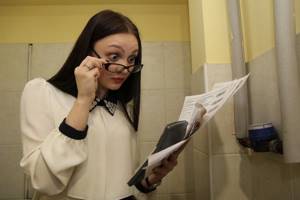
Now, according to experts, tariffs for water and heat occupy a significant place in the payments of the population, and establishing order in decision-making on the approval of tariffs is an important event for the state.
Now, on average in Russia, the preparation and delivery of a liter of water to the tap by the water utility costs three kopecks, and wastewater treatment is even less. In Europe it is two to two and a half times higher. In this case, the same equipment is used, notes the Deputy Executive Director of the Russian Association of Water Supply and Sanitation
With the introduction of benchmark cost rationing, if the tariff decreases, the quality of services will suffer , he believes. Now there are not enough funds for repair work, the networks are deteriorating, and so is the equipment . This leads to more accidents.
Therefore, the introduction of reference tariffs to contain tariffs (if it is not done with a reserve) may lead to a decrease in water quality and system reliability, the expert does not rule out.
We see the work itself as follows: an information space is created, tested on pilots (errors are analyzed), and after that, using the method of selecting best practices (Benchmarking), we strive to encourage water utilities to comply with these best practices. Don’t push the costs of the water utility into this “Spanish boot” and break its leg, but encourage it to ensure that costs are effective.
How the tariff for thermal energy is calculated and approved
All about tariffs for thermal energy, coolant and their transmission
The prices for space heating today make many people think, “What are we paying for?”, “Why is it so expensive?”
and these are not entirely reasonable questions. Every year the tariff for thermal energy increases, but the quality of provision of public heating services still does not improve - the number of accidents and technological damage in networks is only growing every year, losses in networks are increasing, and the wear and tear of pipelines is becoming more and more. Let's try to figure out what the tariff for thermal energy consists of, who receives it and how.
Who can receive a tariff for thermal energy
The tariff for thermal energy is approved by the Regional Energy Commission (REC). According to the standard regulations on the executive authority of a constituent entity of the Russian Federation in the field of state regulation of tariffs, approved by Decree of the Government of the Russian Federation No. 136 dated March 4, 2004, REC approves tariffs for generated thermal energy and transmitted through networks, on the basis of title documents confirming ownership or other legal right.
Thus, the tariffs are:
- for thermal energy (steam) - is established for resource supply organizations that produce heat at their own heat source. Such tariffs are divided by type of generation:
- boiler rooms for heat supply purposes;
- power plants producing in the mode of combined generation of electrical and thermal energy
- for the transfer of thermal energy - can be obtained by any organization that owns a section of the heating network.
For the end consumer, the calculation of the cost of heat supply depends only on the approved tariff for heat energy, which is formed based on all costs of the heat supply organization, including payments to third parties under heat energy transfer (transportation) contracts.
Tariffs for coolant (chemically purified water) and heated component for hot water are also approved.
How to calculate and set the tariff for thermal energy?
It should be noted right away that this is a very complex and labor-intensive process that requires the formation, collection and submission of a huge number of documents to the REC. All documentation must be bound, pages numbered, certified, and all analytical information must be submitted signed by the manager.
Let's look at the main documents to be submitted to the REC:
- General documentation:
- title documents for land plots, buildings, equipment, structures involved in the heat supply process.
- copies of accounting and statistical reports for the previous reporting period and as of the last reporting date.
- information on previously approved tariffs (if any were approved for this enterprise).
- calculated data on the useful supply of thermal energy, including losses in networks and consumption of thermal energy for own needs.
- information about the connected load for heating, ventilation and hot water supply.
- economically justified costs for the production of thermal energy and calculation of the required gross revenue. Such data must be generated in accordance with the methodological instructions for calculating tariffs approved by Order of the Federal Tariff Service of Russia No. 20-e/2 dated 06.08.2004.
- investment program of the enterprise with a breakdown of the amounts and sources of financing for the activities.
- an application signed by the manager for the review of documents and approval of the tariff for thermal energy, and also indicate the method by which tariff regulation is proposed.
- Technical specifications:
- actual information on the useful supply of thermal energy for the previous preparatory and heating periods, plan for previous periods.
- a list of heat sources, heating points with their addresses, regime maps and technical characteristics, as well as diagrams of heating networks.
- specifications of available equipment.
- technical and economic indicators with attached invoices and quality certificates for purchased heat, gas, electricity, fuel, water and sewerage.
- information about the specific fuel consumption standard and the fact that deviations are justified in an explanatory note.
- register of concluded heat supply contracts with consumers.
- copies of concluded contracts for the purchase of water, electricity and gas.
- Economic part.
- copies of constituent documents
- information about the organization, its specifics, features and main category of consumers.
- copies of documents confirming the conduct of tender procurement procedures.
- calculation of repair costs, work schedules and copies of contracts with contractors.
- information about the wage fund, taxes, depreciation and other expenses.
Below we will look at articles about the features of state regulation of tariffs for thermal energy and the prospects that await the thermal energy market in the near future.
Methods of state regulation of heat energy tariffs
Alternative boiler room


